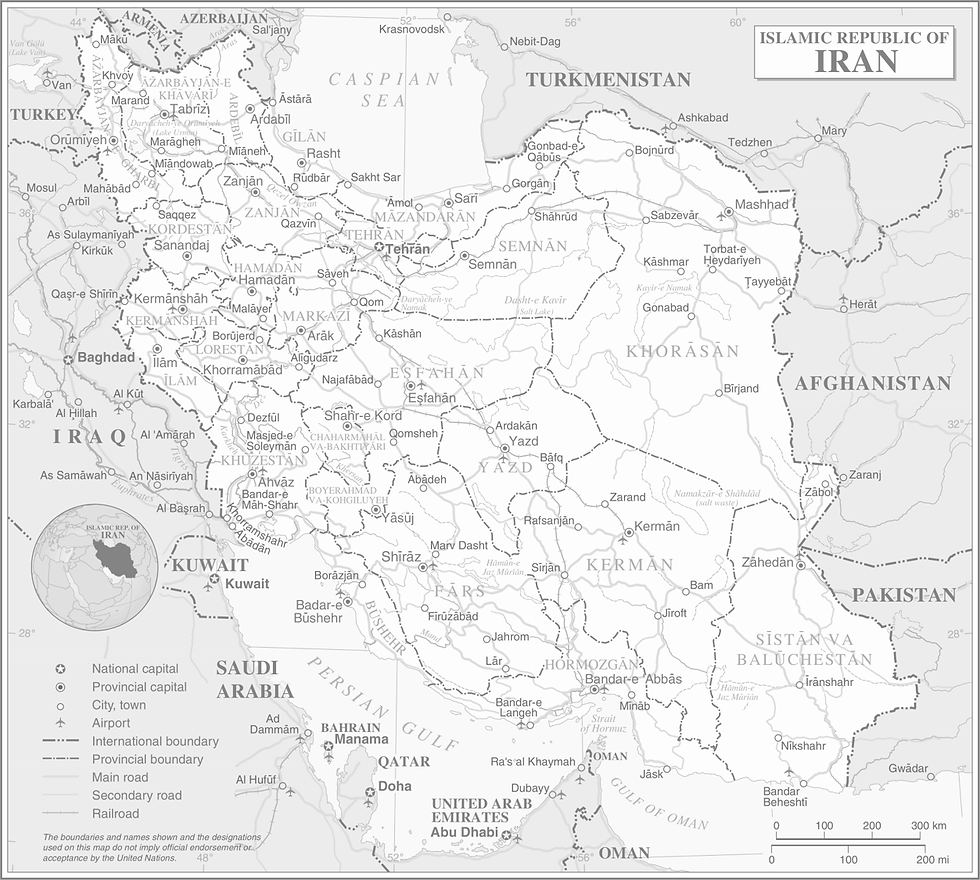

Persian Predicament

Matrix Gaming a
Potential Iranian Future

ABOUT
Persian Predicament 2025 was a multi-week geopolitical simulation that explored the power struggles, foreign interference, and internal fractures shaping a destabilizing Iran. Played asynchronously over several weeks, this Matrix Game allowed participants to take on the roles of key factions within the country, navigating a landscape of political intrigue, economic collapse, civil unrest, and military maneuvering.
Players engaged in strategic decision-making, negotiations, and deception, shaping the future of Iran through diplomacy, military actions, economic policies, and covert operations. Each turn, factions proposed actions and faced counterarguments from rivals, with outcomes determined by structured adjudication and dice rolls, reflecting the uncertainty of real-world crises.
Fight Club has trialed the use of a Large Language Model for this discord based, asynchronous Matrix Game.
READ THE FULL POST GAME REPORT BY CLICKING ON THE IMAGE TO THE RIGHT or HERE (Mobile User)

The Factions
Participants controlled one of six factions, each with unique objectives and resources: Each faction had unique objectives and initial advantages and disadvantages.




-
The Iranian Regime – Struggled to maintain power amid mounting protests, economic freefall, and internal division.
-
The Islamic Revolutionary Guard Corps (IRGC) – Balanced loyalty to the regime with its own ambitions for greater control, facing corruption scandals and a loss of public trust.
-
The Artesh (Regular Military) – Positioned itself as a stabilizing force, staying neutral while factions vied for dominance.
-
The Civil Protest Movement (CPM) – Mobilized against the government, shifting from mass protests to decentralized resistance.
-
Ethnic Minorities & Regional Insurgents – Attempted to capitalize on instability to gain autonomy but struggled with coordination and external support.
-
Foreign Powers (U.S., Israel, Saudi Arabia, EU) – Applied economic, cyber, and covert pressure on Iran but failed to directly engineer regime change.
-
A Fate Player introduced unpredictable real-world complications, such as foreign interventions, economic shocks, and natural disasters, adding layers of realism and friction to the game.
Key Takeaways
Throughout five turns of play, diplomatic maneuvering and internal power struggles shaped the trajectory of Iran’s future. Military action was rare, with economic disruption and information warfare emerging as dominant strategies. Foreign influence played a destabilizing role but did not lead to decisive regime change. Internal factional disputes, particularly between the Regime, IRGC, and Artesh, proved critical in determining the country’s stability.
This game demonstrated the complexity of Iranian geopolitics, the resilience of the state, and the challenges of enacting change in a deeply entrenched system.

What is a Matrix Game? (from PracticalAdviceOnMatrixGames.pdf by Tom Mouat MBE)
Matrix games are different. In a Matrix game, there are few pre-set rules limiting what players can do. Instead, each is free to undertake any plausible action during their turn. The chances of success or failure, as well as the effects of the action, are largely determine through structured argument and discussion. This process allows for imaginative game dynamics that are lively and open-ended, and yet also grounded in reality. In a Matrix Game, you use words to describe why something should happen, the Facilitator or the players (or both) decide how likely it is, and you might roll a dice to see if it happens (but equally, in the face of a compelling argument, you might not need to).
If you can say "This happens, for the following reasons..." you can play a Matrix Game.
Matrix games are particularly well-suited for complex conflicts and issues involving multiple actors and stake-holders, varying interests and agendas, and a broad range of (diplomatic/political, military, social, and economic) dimensions. The game system crowdsources ideas and insight from participants, thereby fostering greater analytical insight. The games themselves are not intended to be fiercely competitive, with obvious winners and losers. Instead, they operate with the players working to generate a credible narrative. The player roles may have objectives that will place them in conflict with other players, but it is perfectly possible for all of the players to achieve at least some of their objectives by the end of the game.
How does a Matrix Game work
In each turn of a Matrix Game, players take actions to shape the game’s unfolding story. Here’s how a game turn (consisting of six faction turns and representing 4-6 weeks in game time) works:
1. Establish Turn Order - The Facilitator states the order the factions will make their arguments. This will change between game turns to avoid issues of pre-emption and prediction.
2. Action Proposal: The initiating faction player(s) make an argument consisting of an action and an effect. This can be an action carried out specifically by their faction or it can be something else that is plausible given previous arguments, established facts and reasonable assumptions. Players cannot argue that another faction represented conducts an action as they have agency in the game.
3. Supporting Reasons (Pros): The initiating player(s) provides up to three reasons (pros) why the stated action will succeed. There may be more than three reasons, in which case the players should pick the most important ones to use. Weak pros will be discounted by the facilitator
4. Counter-Arguments (Cons): The remaining players can offer counter-arguments (up to three cons) explaining why the action might not succeed or not achieve the desired effect. These counter-arguments add friction and simulate the real-world challenges each faction faces. It is also possible for other players to add additional pros if fewer than three were proposed or any were discounted by the facilitator.
5. Facilitator’s Adjudication: The facilitator evaluates all stated pros and cons, filtering out any weak or irrelevant points. If an argument has no cons it automatically succeeds. Opposed arguments are determined to have a risk of failure and two six sided die are rolled to determine the result. The die roll is modified positively by the number of accepted Pros and negatively by the number of accepted Cons. The modified result of the two rolled die determines the success/failure of the action. The higher or lower the number will also impact the degree of positive or negative effect as a result. It is entirely possible for actions to 'blowback' and cause unintended consequences. The die roll thresholds are
-
2-3 Catastrophic Failure
-
4-6 Simple Failure
-
7-10 Simple Success
-
11-12 Significant Success
6. Action Outcome: The facilitator narrates the outcome, describing how it impacts the game world. Where appropriate pieces, markers and other visual aids are adjusted to help players keep track of what is happening
7. Repeat for each faction. Steps 2-6 are conducted again for each faction as stated in the Turn Order.
8. Game State Update: After each faction has completed their turn, the facilitator summarizes the key events and updates the game state to reflect any changes. The game map will also be updated so that players can see the totality of what has happened. This may also include unintended consequences as a result of the player arguments in the aggregate. This sets the stage for the next turn, with each action contributing to an evolving narrative.
Negotiations, Neutrality, Collaboration, Alliances, Threats and Betrayal: Throughout every game turn the players within the factions may communicate with one another through discord to discuss potential cooperation, deals and threats. As in real life none of these conversations are binding and they present a unique opportunity to deceive and confuse other players as to the true intentions of a faction on its turn. There is no compulsion to engage and stony salience is an acceptable tactic
%20Registeredv2.png)
